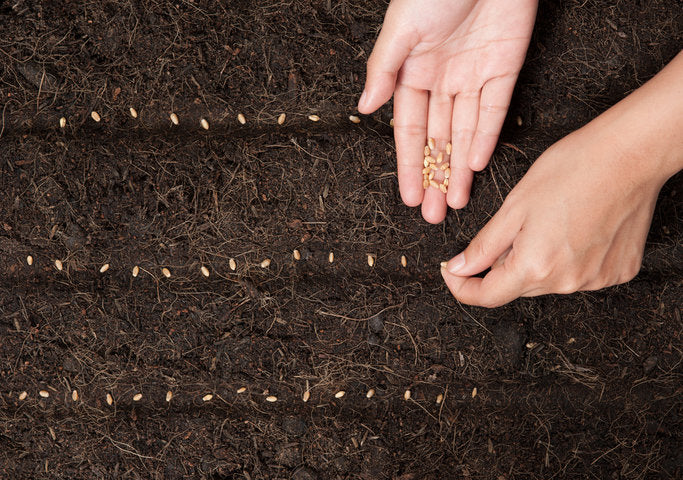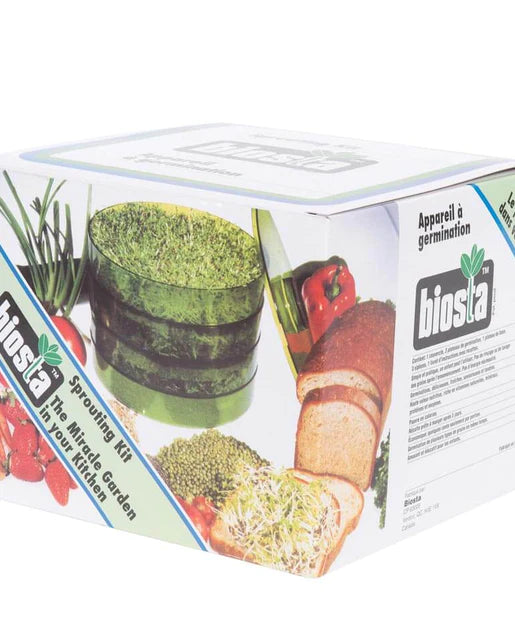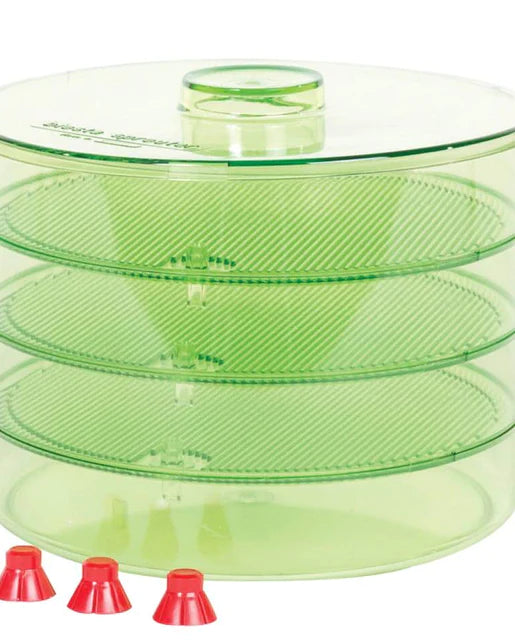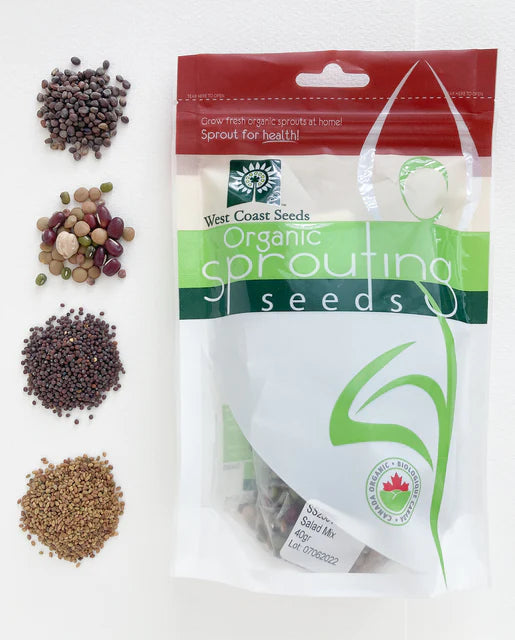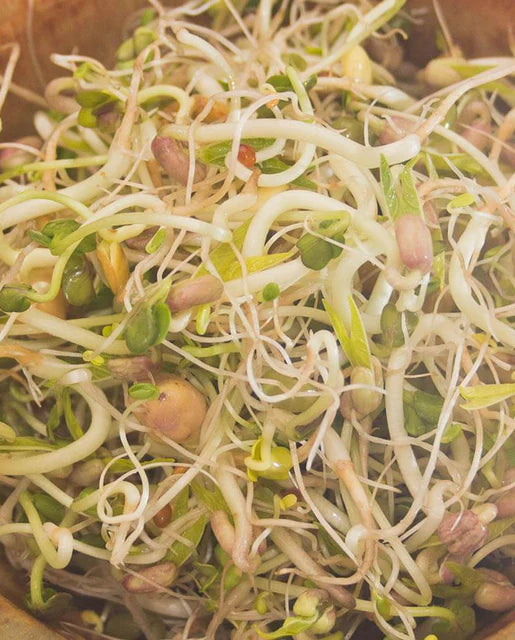6 products
6 products
Sort by:
Seeds
The easiest way to produce fresh, high quality sprouts in your kitchen! In just 2-4 days you can enjoy healthful sprouts in soups, salads, and sandwiches. This sprouter has three separate sprouting trays that drain automatically for a continual harvest or for three different sprouting mixes at once. The Biosta Kitchen Crop Sprouter is really simple and convenient for sprout lovers. Constructed from BPA-free polystyrene (recycle #6) plastic. This sprouter comes packaged in a box that measures 24cm wide x 20cm tall x 24cm long.
CERTIFIED ORGANIC! The Fantastic Four sprouting collection an excellent introduction to sprouting. It contains a selection of four of our most popular sprouts: Mild alfalfa, zingy mustard, diverse salad blend, and spicy radish. And they come individually packaged 40g at a time, so there's no big commitment to using up a giant quantity of seeds. Explore the wide range of flavours and sizes of sprouts, and then experiment with blending your own sprout mixes. These nutritious super-foods are ready to eat just four days after starting. The Fantastic Four sprouting collection makes a great gift.
- 4 of our most popular sprouts
- Great introduction to sprouting
- Alfalfa, mustard, salad blend, radish
CERTIFIED ORGANIC! Delectable crunch and flavour, and packed with all the nutrients of broccoli sprouts. Raw broccoli contains the cancer fighting compound sulforaphane. Broccoli organic microgreens seeds are fast-growing for quick harvests. Grow under bright lights for the best results. Harvest at any stage or wait for the first true leaves to just start to appear. Then trim them with scissors, and give them a good rinse before adding them to salads or sandwiches. Broccoli sprouts and microgreens are considered to be one of the most nutritious of all super-foods. They offer a tidy way to consume all of the nutrients of mature broccoli in a form that is easily digested.
- Fast and easy to grow
- Nutritious super-food
- Easily digestable
- Source of fibre, vitamins & minerals
- Certified organic seeds
CERTIFIED ORGANIC! Mung beans, adzuki beans, chickpeas, red clover, radish, and green lentils — big, crunchy sprouts that are perfect as a salad topping, or as a salad on their own. This is the perfect mix of mild, but distinct flavours that combine for a deeply satisfying garnish or side course. This blend handles dressing beautifully. Grow Salad Blend organic sprouting seeds using the Biosta sprouter and harvest handfuls of perfect sprouts in only four to five days. This sprout blend has been a popular seller at West Coast Seeds for many years, and is much loved for its substantial sprouts and their mild flavour.
- A blend of six ingredients
- Makes really substantial sprouts
- Mild flavour
- Good cooked or raw
- Certified Organic!
$13.99
Unit price perCertified Organic! In the Sandwich Booster Mix organic sprouting seeds are alfalfa, mung beans, red clover, and red radish. This is the combination that some studies suggest can prevent cancer and other serious health problems. And while it’s working wonders on your health, it also tastes good as well. Superb in salad rolls. A mixture of alfalfa, mung beans, red clover, and radish sprouting seeds. This blend has an appealing, crunchy texture, with a bit of succulence from the mung beans. This mix is superb for sandwiches and salads, and enormously healthy eating. Sprouts are easier to digest than mature plants, so your body will take better advantage of the powerful nutrients within. This blend provides vitamins, minerals, protein, and dietary fibre, all in a form that is easily digested.
- Certified organic
- Alfalfa, mung, clover & radish
- Easy to digest
- Highly nutritious
- Super-food
CERTIFIED ORGANIC! Hard red wheat, barley, oats, and triticale are some of the fastest growing sprouts. They are ready to eat just as the root tip emerges. Keep the red skins intact for the highest nutrition. This blend supplies vitamins A, B, C, and E, as well as calcium, iron, niacin, magnesium, potassium, manganese, fibre, and protein.
- Fast growing
- Nutrient dense
- Good for juicing
- Certified Organic

